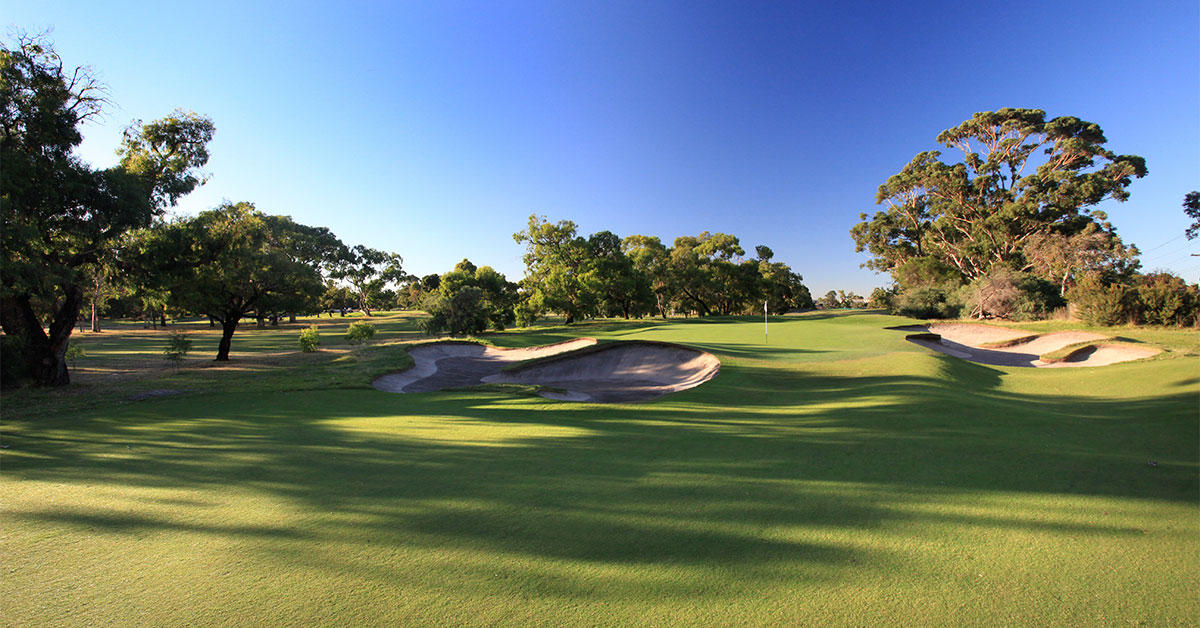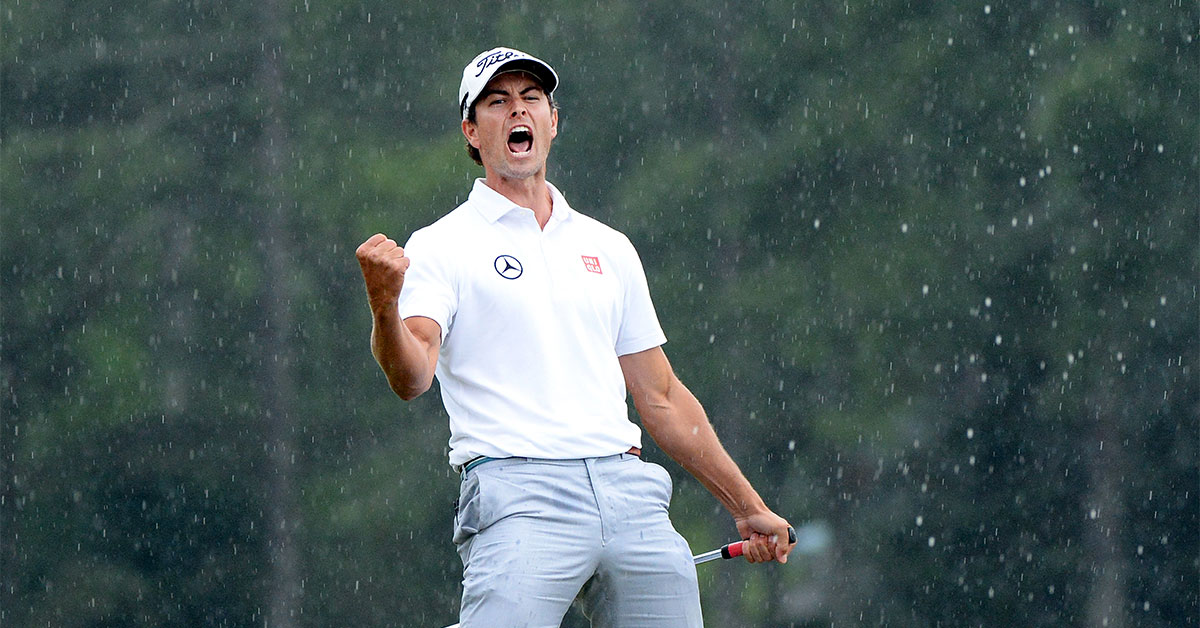What to make of the frenetic finish to 2019.
After a whirlwind finish to 2019, Australian golf was left with many questions to ponder over the holiday break. These were just some of the topics that dominated Christmas discussions:
Same old Day on the nose with tournament officials
All that promotional signage. All that marketing material. All the appearances that had been planned with high-paying corporates and star-struck junior golfers. All the anticipation around ticket sales. All for nothing.
It’s enough to make your blood boil, which apparently was the case inside the camp of Australian Open officials during the build-up to what was widely acknowledged as the strongest field to hit our shores in years.
Predictably, Jason Day’s last-minute withdrawal from his national Open and the next week’s Presidents Cup due to a flare-up of an ongoing back injury was lambasted by media and the general public, some questioning the legitimacy of his injuries. One American golf blogger even accused Day of “once again” figuring out “how to skip the Aussie golf season”, a direct reference to his previous no-shows on home soil (he has played in only three Australian Opens since turning professional in 2006).
On the advice of his medical team, Day pulled the pin after reinjuring his chronic back ailment and released a short statement that concluded with: “I look forward to playing at home in the near future.”
The problem for Day now is that “near future” may be some distance away if our sources are on the money. According to some inside the Aussie tournament scene, Day has plummeted down the pecking order of marque star power and could even be ignored completely for future events Down Under. It’s our understanding that, while officials have no reason to question the legitimacy of his injuries, Day has simply become too much of a risk for tournament promoters to hang their hat on. The absence of the 2015 US PGA champion at The Australian Golf Club was felt even more in December after fellow marque players Adam Scott and Sergio Garcia failed to make the weekend action, while bushfire smoke blanketed much of Sydney, triggering government health warnings over hazardous air quality that deterred many fans from attending.
Golf needs more villains like Patrick Reed
Never one to avoid controversy, Patrick Reed’s sand-swiping practice swings in December’s Hero World Challenge consequently breathed new life into the Presidents Cup. Forever branded the poorer cousin of the Ryder Cup due to a perceived lack of passion and rivalry between the two teams, Reed’s dubious actions in the Bahamas – where he was hit with a two-stroke penalty for improving his line of play in a waste bunker – provided the shot in the arm the Presidents Cup had been crying out for. Suddenly the gloves were off: social media vitriol exploded, Marc Leishman and Cameron Smith called on the home crowd to “give it” to Reed and his “bulls–t excuses”, while Ernie Els declared it was time to “kick their arses” in his pre-tournament presser with Tiger Woods. Patrick Reed and the Presidents Cup’s many possibilities dominated news headlines, Royal Melbourne was abuzz, and golf fans had a new purpose to throw their support behind the Internationals. It reinforced why the clean-skinned, oft-robotic sport of golf needs its villains, perhaps more so than any other sport.
Royal Melbourne (Composite course) and Pine Valley then… daylight
Not that it needed it, but reaffirmation that Royal Melbourne Golf Club sits at the very top of the golf-course architecture tree came thick and fast during the Presidents Cup.
As Golf Digest’s John Huggan reported during the event, ask Mike Clayton what he thinks about the Royal Melbourne Composite layout (12 holes from the West course, six from the East) and you are quickly reminded why the Alister MacKenzie gem is universally hailed as the best course in the Southern Hemisphere.
“Royal Melbourne is the closest thing you will ever see to Pine Valley, where every hole is great,” says the former European Tour player and respected course architect. “I can’t think of another course where almost any hole would be the best hole on 90 percent of courses anywhere in the world. That’s Pine Valley. And that’s the Composite course at Royal Melbourne.”
Tiger Woods agreed in an interview with Australian Golf Digest, saying Royal Melbourne has even inspired his own golf-course design projects: “You have to chase the ball and anticipate whether it’s going to take a big hop when it gets to the green. That to me is fun and is how the game of golf should be played.”
 What about Woodlands?
What about Woodlands?
“Woodlands’ continued omission from the ‘official’ Sandbelt group is not only an anomaly and an injustice, but in some ways an insult to the game here,” says Planet Golf author and Australian golf course architect Darius Oliver. As the spotlight was shone on Melbourne during the Presidents Cup, Oliver penned an emotional piece in support of Woodlands, which was a glaring omission on tourism pamphlets promoting Victorian golf during the showpiece event.
“The course has as much, or more, sand beneath its fairways than many of the so-called “Sandbelt” elite, features the bunkering of legendary Royal Melbourne superintendent Mick Morcom and was designed in as quintessentially a Melbourne manner as any of its neighbours. Furthermore, one could probably argue that, with the exception of Royal Melbourne West and Kingston Heath, it has as many genuine A-grade holes as any course in our state.
“Far be it from me to suggest the Melbourne Sandbelt group does anything outside its own self-interest, but for the sake of golf tourism in this city, not to mention the health of Woodlands itself, they really should bring the club into the fold and add a ninth member to their esteemed group.”
With Woodlands currently ranked 26th in Australian Golf Digest’s Top 100 Courses, it’s hard to disagree with the man who co-designed the world-ranked Cape Wickham on King Island. Is it time Woodlands was welcomed with open arms?
Is Bradley Hughes the most underrated coach on the planet right now?
Just before our summer of golf got underway, American golfer Brendon Todd, a player plagued by the full-swing yips who ended 2018 ranked 2,006th in the world, won twice – in a row – to complete one of the more remarkable comebacks in golf history. And behind the 34-year-old’s resurrection was former Australian PGA Tour pro, Bradley Hughes.
“When you’re a good player, you never forget how to do it all,” a humble Hughes told Golf Digest. “You’ve just been led down the wrong track or lost your way a bit. So I was able to point him back and everything’s going well for him, and me.”
Not surprising is that Hughes, a proud Victorian who now teaches out of Holly Tree Country Club in Simpsonville, South Carolina, is a busy man these days as word of the work he’s done with Todd spreads. The two-time Australian Masters champ took time out of his packed schedule to join the Golf Digest podcast to discuss his work with Todd, his book that helped bring the two together, and his swing theory that focuses more on pressure than positions. Check it out here.
C’mon Aussie: Our moment of the decade
On April 14, 2013, Australian golf’s pin-up boy Adam Scott ended decades of near-misses and heartbreak for Aussies at Augusta National. In the failing light, he beat 2009 champion Angel Cabrera with a birdie at the second hole of a sudden-death playoff to don his country’s first green jacket.
 “Adam Scott! A life changer!” screamed TV commentator Jim Nantz. “He’s the Wizard of Oz,” added colleague Nick Faldo. “From Down Under to on top of the world,” Ian Baker-Finch concluded, fittingly so.
“Adam Scott! A life changer!” screamed TV commentator Jim Nantz. “He’s the Wizard of Oz,” added colleague Nick Faldo. “From Down Under to on top of the world,” Ian Baker-Finch concluded, fittingly so.
As the champagne flowed, the plaudits kept coming, including this from then-Prime Minister Julia Gillard: “By any measure, a historic day for Australian sport.”
For Scotty, it was the culmination of hard work and finally embracing the mental anguish that comes with having the weight of a nation on his shoulders.
“I’m a proud Australian,” he said, “and I hope this sits really well back at home.”
It did, Scotty. And will forever.
Brad Clifton
Editor-in-Chief




